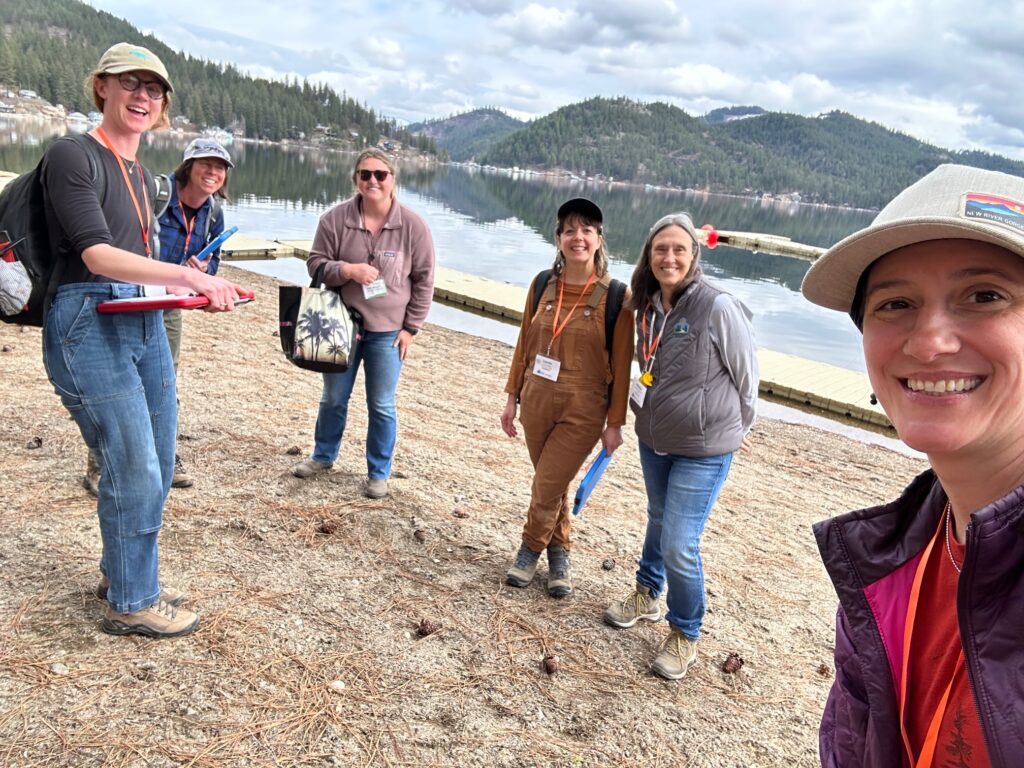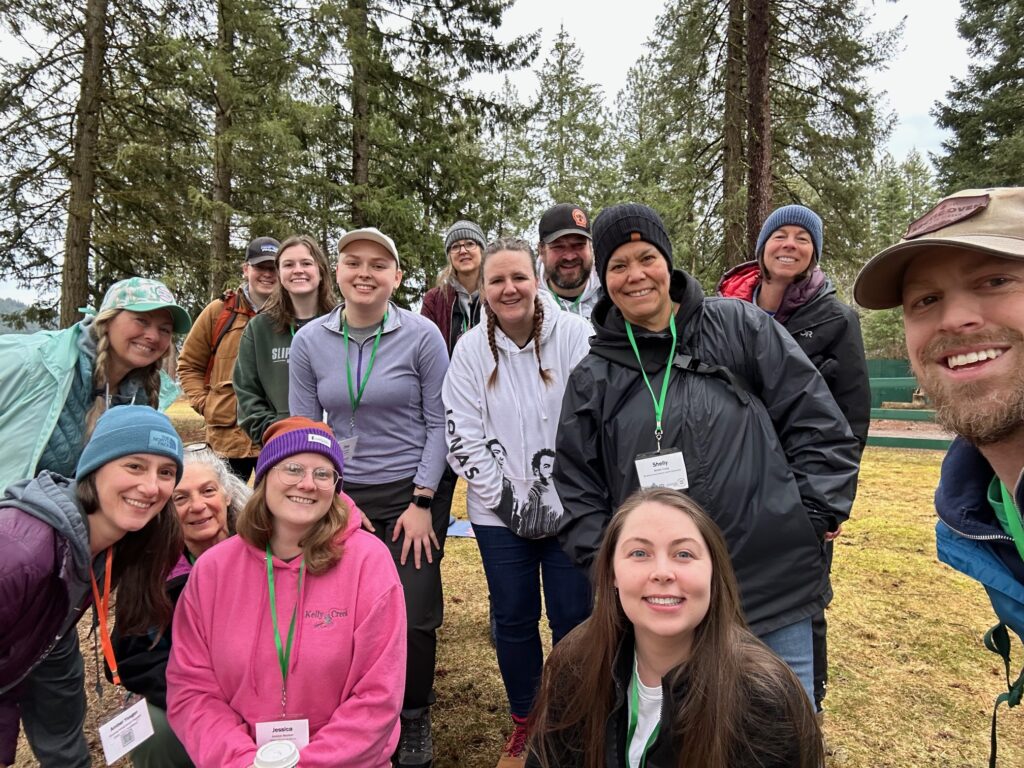In many ways, the experience of teachers who attend Outdoor School training mirrors that of their students. They begin the week as slightly reserved individuals and end it as an open, participatory and bonded group.
“The journey of being together is impactful,” says Lauren Troyer, PEI’s South Sound FieldSTEM Coordinator. “I saw it in the feedback. You go away from home, you’re together in this place and at the end, you don’t want to leave.”
Troyer and other PEI staff co-facilitated the four-day spring training with Outdoor Schools Washington. Thirty-three public school teachers and outdoor school educators from throughout Washington gathered at Camp Gifford on Deer Lake in Eastern Washington. PEI staff played three roles: facilitating sessions, leading cabin groups and providing support for planning and implementation.
“Outdoor education impacts the lives of kids and instills values and experiences they can’t get anywhere else. These experiences last a lifetime and create a stronger society. It IS core instruction.”
— Outdoor School Training Participant

One of those sessions was ‘Time on the Trail,’ an instructional walk focused on two characteristics of high-quality outdoor schools. The first was seasonally relevant programming. “The key was that [Eastern Washington FieldSTEM Coordinator] Amy Dawley visited Camp Gifford multiple times in advance, so we knew the ground was still frozen,” Troyer explains. “We planned our activities around that, and thinking about how birds and trees were still coming out of dormancy.”
Interdisciplinary learning was the second characteristic. Participants learned how they could incorporate subjects like math, social studies or English Language Arts (ELA) through outdoor learning. One activity encapsulated the latter two topics, along with science. “At the end of Time on the Trail, we did perspective stories from a natural history point of view,” Troyer says. “Teachers took the perspective of the lake or a mountain and told the story of the place from that point of view.”
Troyer and PEI’s Central Washington FieldSTEM Coordinator Amber Yeager also facilitated an introductory session for Project WET and Project WILD that incorporated multiple activities from both programs. “We chose some great active games and the teachers really enjoyed getting to go through those and see how they’re done,” says Yeager. “They were excited to try the activities with their students and also talked about how they could be a resource to leave with substitute teachers for the students who aren’t able to attend camp.”
“The hands-on modeling of activities we can do with students is my favorite part of this training,” one teacher reported in a post-workshop evaluation. “Can’t get enough.”
PEI’s team also facilitated cabin groups with a series of bonding activities that culminate in a group skit on the last night of the program. “I love how cabin groups model the experience with students,” says Yeager. “They’re all coming with different backgrounds and experiences and you have to consider how to make it accessible for everyone, to make everyone feel safe and create a trusting environment.”
On the last day, educators created action plans with support from PEI and each other. “The sharing of ideas was really beautiful,” Troyer observes. “Teachers, admin and camp directors were collaboratively problem solving and sharing strategies for dealing with the challenges of running outdoor school programs.”
Yeager agrees. “When you’re in education, time together with your colleagues is very limited,” she notes. “To have that much time with other folks who are passionate about this type of learning and to be able to collaborate and talk about these ideas is very inspiring. It gets the creativity flowing.”
The post-workshop evaluation asked participants to share their thoughts on how placed-based outdoor learning affects their students. “Outdoor education impacts the lives of kids and instills values and experiences they can’t get anywhere else,” one responded. “These experiences last a lifetime and create a stronger society. It IS core instruction.”
